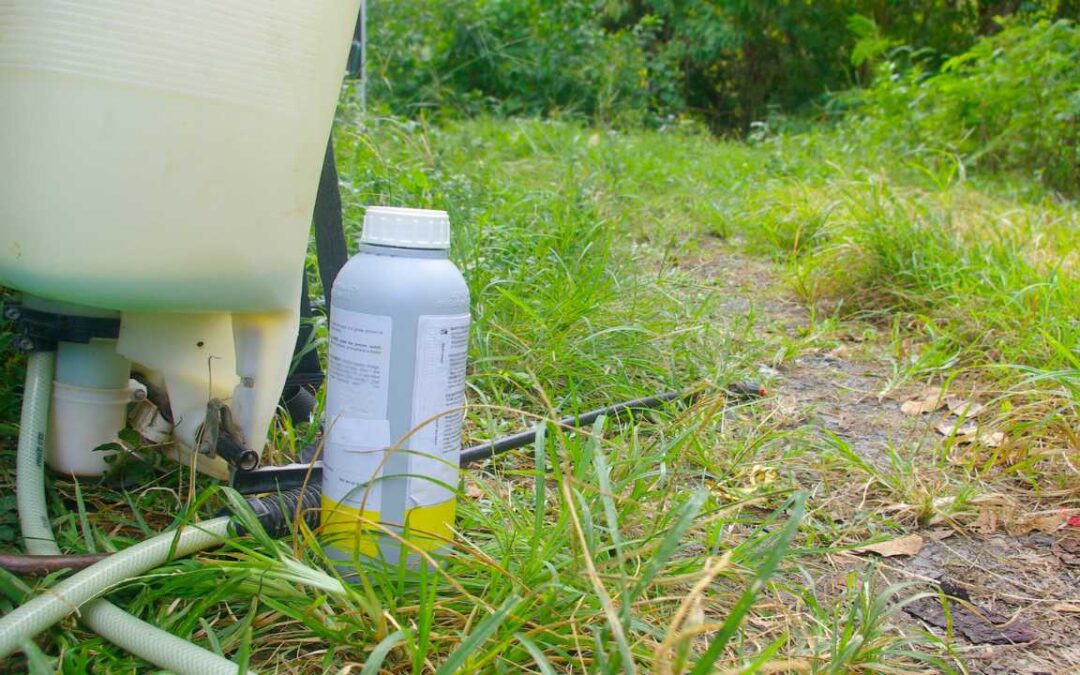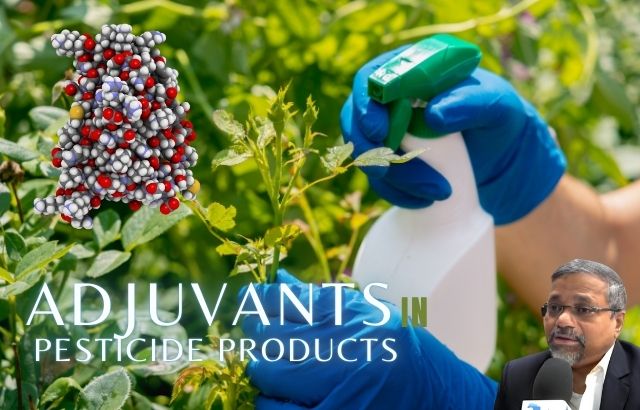Surfactants, a common ingredient in many household and personal care products, play a vital role in ensuring effective cleaning and foaming properties. However, concerns about their environmental impact have led to the rise of green surfactants – environmentally friendly alternatives that promise the same cleaning power without the harmful side effects.
In this article, we delve into the potential of green surfactants, evaluating their advantages and disadvantages. We examine their efficacy in different applications and assess their impact on the environment. By understanding the benefits and drawbacks of these surfactants, consumers and businesses can make informed choices about the products they use and manufacture.
Join us as we explore the world of green surfactants, exploring their potential to revolutionize the cleaning industry while minimizing harm to our planet. Discover how these biodegradable alternatives hold the key to a more sustainable future and learn how to harness their power to unlock cleaner and greener living.
Brand Voice: Informative and engaging, with a focus on sustainability and empowering readers to make eco-conscious choices.
Understanding traditional surfactants and their impact on the environment
Traditional surfactants have been widely used in various cleaning and personal care products for decades. These surfactants, while effective in their cleaning abilities, come with a heavy environmental cost. They are often derived from non-renewable resources, such as petroleum, and are non-biodegradable, leading to long-lasting pollution in water bodies and soil.
Moreover, some traditional surfactants have been found to be toxic to aquatic life, causing disruptions in ecosystems and posing a risk to human health. As awareness about these issues grows, consumers and businesses alike are seeking alternatives that can deliver the same cleaning power while being more environmentally friendly.
Advantages of green surfactants
Green surfactants, also known as bio-surfactants, are derived from renewable resources, such as plants, microbes, or even waste materials. These surfactants offer numerous advantages over their traditional counterparts.
One of the key advantages of green surfactants is their biodegradability. Unlike traditional surfactants, which can persist in the environment for years, bio-surfactants break down naturally, reducing their impact on ecosystems. This is especially important for products that are washed down the drain and eventually find their way into water bodies.
In addition, green surfactants are often less toxic to aquatic life, making them a safer choice for both the environment and human health. This is particularly relevant for those who work in industries that involve frequent contact with surfactants, such as cleaning services or manufacturing facilities.
Disadvantages of green surfactants
While green surfactants offer many advantages, they also have their limitations. One of the main challenges is their cost. Green surfactants, being derived from renewable resources, can be more expensive to produce compared to their petroleum-based counterparts. This cost factor can make it challenging for businesses to transition to greener alternatives, especially for those operating on tight budgets.
Moreover, not all green surfactants are created equal. Some may not perform as effectively as traditional surfactants, leading to concerns about their cleaning power. It is crucial for manufacturers and consumers to carefully evaluate the efficacy of green surfactants in different applications to ensure that they can deliver the desired results.
Evaluating the effectiveness of green surfactants
To determine the effectiveness of green surfactants, it is essential to consider their performance in various applications. Studies have shown that bio-surfactants can be just as effective as traditional surfactants in cleaning applications, including laundry detergents, dish soaps, and personal care products.
In fact, some green surfactants have demonstrated superior performance in certain areas. For example, certain bio-surfactants have shown excellent foaming properties, making them ideal for applications where foam is desired, such as shampoos or bubble baths. By evaluating the specific needs of each application, businesses can identify the most suitable green surfactants for their products.
Case studies: Successful implementation of green surfactants
Several companies have successfully transitioned to green surfactants and reaped the benefits of their eco-friendly properties. One such example is a cleaning product manufacturer that switched from traditional surfactants to bio-surfactants in their line of household cleaners. Not only did this move help reduce their environmental impact, but it also provided a marketing advantage, as consumers increasingly seek out environmentally friendly products.
Another case study involves a personal care product company that replaced petroleum-based surfactants with bio-surfactants in their body washes and shampoos. By doing so, they were able to appeal to a growing segment of eco-conscious consumers and gain a competitive edge in the market.
Factors to consider when choosing green surfactants
When selecting green surfactants for your products, there are several factors to consider. Firstly, it is important to ensure that the surfactants are derived from renewable resources and are biodegradable. This will help minimize their environmental impact and ensure that they break down naturally after use.
Secondly, consider the specific needs of your product. Evaluate the cleaning power, foaming properties, and other performance factors to ensure that the chosen green surfactants can deliver the desired results. Conducting thorough testing and seeking expert advice can help guide the decision-making process.
Overcoming challenges in using green surfactants
Transitioning to green surfactants may present certain challenges, but they can be overcome with careful planning and implementation. One challenge is the higher cost associated with bio-surfactants. To address this, businesses can explore partnerships with suppliers or invest in research and development to find cost-effective alternatives.
Another challenge is the need for consumer education. Many consumers are still unfamiliar with green surfactants and their benefits. Educating consumers about the advantages of bio-surfactants and the importance of making eco-conscious choices can help drive demand and create a market for these sustainable alternatives.
Future trends in green surfactants
As the demand for sustainable products continues to grow, the future of green surfactants looks promising. Researchers are constantly exploring new methods of producing bio-surfactants, including innovative fermentation processes and genetic engineering techniques.
Additionally, advancements in technology are enabling the development of bio-surfactants with enhanced performance characteristics, such as improved stability and compatibility with different formulations. These advancements will further expand the applications of green surfactants and make them a viable choice for a wide range of industries.
FAQs on Green Surfactants: Evaluating the Advantages and Disadvantages

1. What are green surfactants?
Green surfactants are surfactants (surface-active agents) derived from renewable, biodegradable, and environmentally friendly resources, such as plant oils, sugars, or natural fatty acids. Unlike conventional synthetic surfactants, which are often petroleum-based, green surfactants are designed to reduce their environmental footprint while maintaining effective cleaning or emulsifying properties.
2. What are the main advantages of green surfactants?
- Environmentally Friendly: Green surfactants are typically biodegradable and have lower toxicity, reducing their environmental impact.
- Sustainability: They are made from renewable resources, which supports the transition to a more sustainable economy.
- Low Toxicity: They tend to be less harmful to aquatic life and ecosystems compared to traditional surfactants.
- Versatility: Green surfactants can perform similar functions to synthetic ones in a wide range of applications, including detergents, personal care products, and industrial cleaners.
- Consumer Demand: Growing consumer preference for environmentally conscious products makes green surfactants more marketable.
3. What are the disadvantages of green surfactants?
- Cost: Green surfactants can be more expensive to produce than their synthetic counterparts, which might increase the cost of end products.
- Performance Limitations: In certain applications, green surfactants may not match the performance of conventional surfactants, especially in extreme conditions (e.g., very low or high temperatures).
- Stability Issues: Some green surfactants can have shorter shelf lives due to their natural origin, which can affect product stability.
- Scale of Production: Scaling up the production of green surfactants can be challenging and may require investment in new manufacturing processes.
4. How effective are green surfactants compared to traditional ones?
While traditional surfactants, such as alkylbenzene sulfonates, have been dominant for decades, green surfactants have made significant strides in terms of effectiveness. In many cases, green surfactants can achieve comparable cleaning power, especially in mild or non-industrial settings. However, for heavy-duty industrial applications, some green surfactants may require formulation adjustments to match the performance of conventional products.
5. Are green surfactants safe for the environment?
Yes, most green surfactants are biodegradable and have lower toxicity to aquatic life. Many are certified by international standards such as EcoLabel, Cradle to Cradle, or NSF (National Sanitation Foundation), ensuring that they meet environmental safety criteria.
6. Can green surfactants be used in personal care products?
Yes, green surfactants are widely used in personal care products such as shampoos, body washes, facial cleansers, and even in makeup removers. They offer a gentler, more skin-friendly alternative to synthetic surfactants, which can sometimes cause irritation.
7. What are some examples of green surfactants?
- Sodium Lauryl Sulfate (SLS) derived from coconut oil: A natural alternative to the petroleum-based SLS.
- Sucrose esters: Derived from sugar, these are non-toxic, biodegradable, and mild in their cleaning properties.
- Alkyl polyglucosides (APGs): These surfactants are derived from renewable resources like corn and coconut and are widely used in both cleaning and personal care products.
8. Are green surfactants widely available?
The availability of green surfactants has grown significantly over the past few years. However, they may still be less accessible in certain markets compared to their synthetic counterparts. Availability is increasing as consumer demand for sustainable products rises.
9. What industries are using green surfactants?
- Cleaning & Detergents: Household and industrial cleaning products are increasingly using green surfactants to appeal to environmentally-conscious consumers.
- Personal Care: From shampoos to lotions, many brands are incorporating green surfactants to offer more sustainable and gentle alternatives.
- Agriculture: Some green surfactants are used as wetting agents or emulsifiers in agricultural applications, reducing environmental harm.
- Food Industry: Green surfactants are sometimes used as emulsifiers in food processing.
10. How are green surfactants produced?
Green surfactants are typically produced by the fermentation of natural raw materials (like sugars) or through chemical processes that involve natural oils or fatty acids. The production methods aim to reduce reliance on fossil fuels and minimize harmful emissions.
Interesting info on Green Surfactants

- Market Growth: The global green surfactants market is expected to grow at a compound annual growth rate (CAGR) of 6.5% from 2020 to 2027, reaching an estimated market size of over $16 billion by 2027.
- Consumer Preference: A 2022 survey by Statista found that 64% of consumers in the U.S. are willing to pay more for eco-friendly or sustainably sourced products, boosting the demand for green surfactants in consumer goods.
- Biodegradability: According to a study by the Environmental Protection Agency (EPA), over 85% of green surfactants are fully biodegradable within 28 days, compared to synthetic surfactants, which can take several months to degrade.
- Environmental Impact: Research indicates that using biodegradable surfactants can reduce the accumulation of toxic substances in aquatic environments, with some green surfactants showing a reduction in chemical oxygen demand (COD) by up to 40% compared to their synthetic counterparts.
Conclusion
Green surfactants offer a promising solution to reduce the environmental impact of cleaning, personal care, and industrial products. Their benefits—such as biodegradability, sustainability, and reduced toxicity—are becoming increasingly important to consumers and businesses alike. However, challenges such as cost, performance limitations, and scalability still exist. As technology and consumer demand continue to evolve, green surfactants are expected to play an even larger role in promoting sustainability in various industries.












